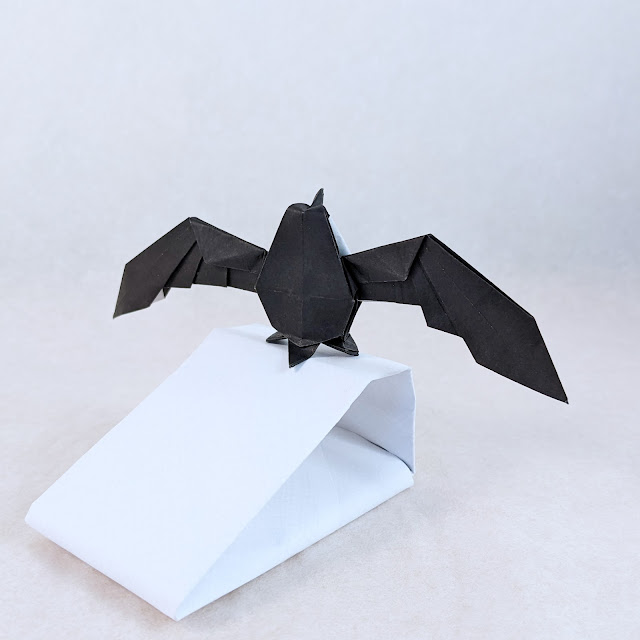Imaginary creature featuring penguin with cormorant wings. Designed for Origami Dan design contest, whose theme was "animal mashup".
Design & Fold
I saw a winged penguin in someone's instagram profile picture, and suddenly got this idea. When washing dish after dinner I thought of making a penguin with long wings.
So what do I need? Two long flaps for wings, a short flap for head, and three short flaps for legs. Sounds like a job for bird base with point split, again. In fact the layout is similar with my frigatebird.
On frigatebird, the remaining longer flap is used for color changed air sac. I can repurpose that for this penguin for color changed belly.
There's not much to say about the design process. I just do point splitting on two opposite long flaps. Then bisect and sink all 4 edges near the smaller bird base flap. Picture below shows the sequence.
 |
| Last step is bisect and sink. Closed sink or open sink doesn't matter. Repeat on all 4 sides. |
To make wing pleats, I swiveled the wing flaps. This will raise some "loose" paper that can be pleated.
The final fold uses 15 cm common origami paper (kami).



Comments
Post a Comment